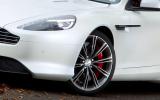If you want a V12 Aston Martin DB9 for the price of an average-mileage Volkswagen Golf GTI Performance, look no further than the used market.
Obviously they couldn’t be more different and, as a sage once said, buy a DB9 cheap, pay twice.
Still, almost twice as powerful, three times as many cylinders, over a second quicker to 60mph and looks that will give you neck ache from turning back to admire it. As the 2035 ICE ban looms and new V12s drink in the last-chance saloon, a cheap DB9 is stupidly tempting – running costs aside, of course.
The 2+2 GT was launched in 2004 and bowed out in 2016, so even the youngest ones are quite old. It was the first Aston to be built at the company’s new Gaydon works.
In terms of modern manufacturing equipment and processes, the plant was a world away from Aston’s Bloxham factory, where the DB7, the DB9’s predecessor, had been built. Unfortunately, these advantages weren’t immediately felt.
Safety recalls for the new model were almost in double figures, and it wasn’t until 2006 that its electrical system, a major source of criticism, was upgraded. Also at this time, the front seats were redesigned and a Sport Pack was added to the already extensive options list.
Further improvements followed in 2009 when the DB9 gained more power (up from 450bhp to 470bhp), better-riding Bilstein dampers and a redesigned centre console.











































